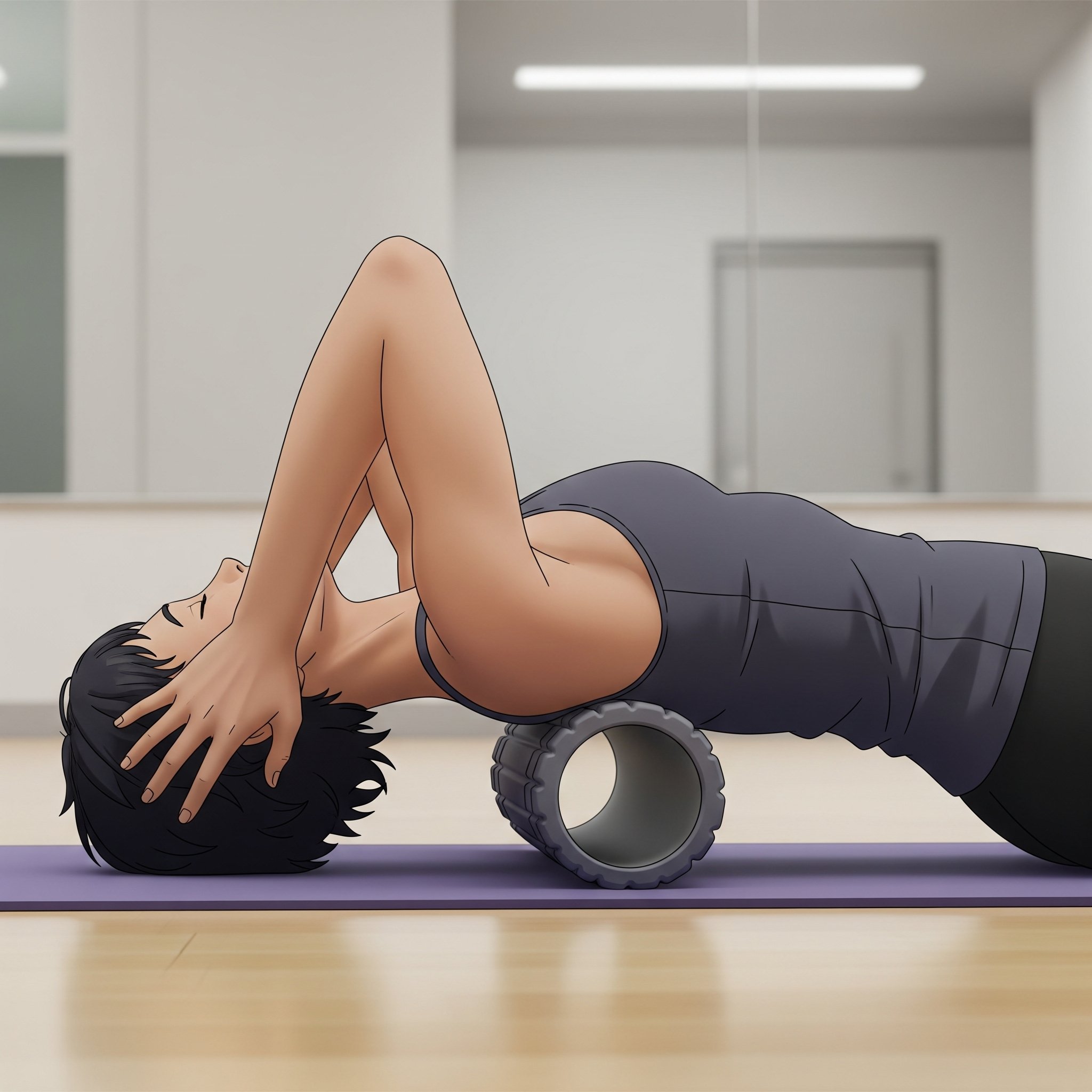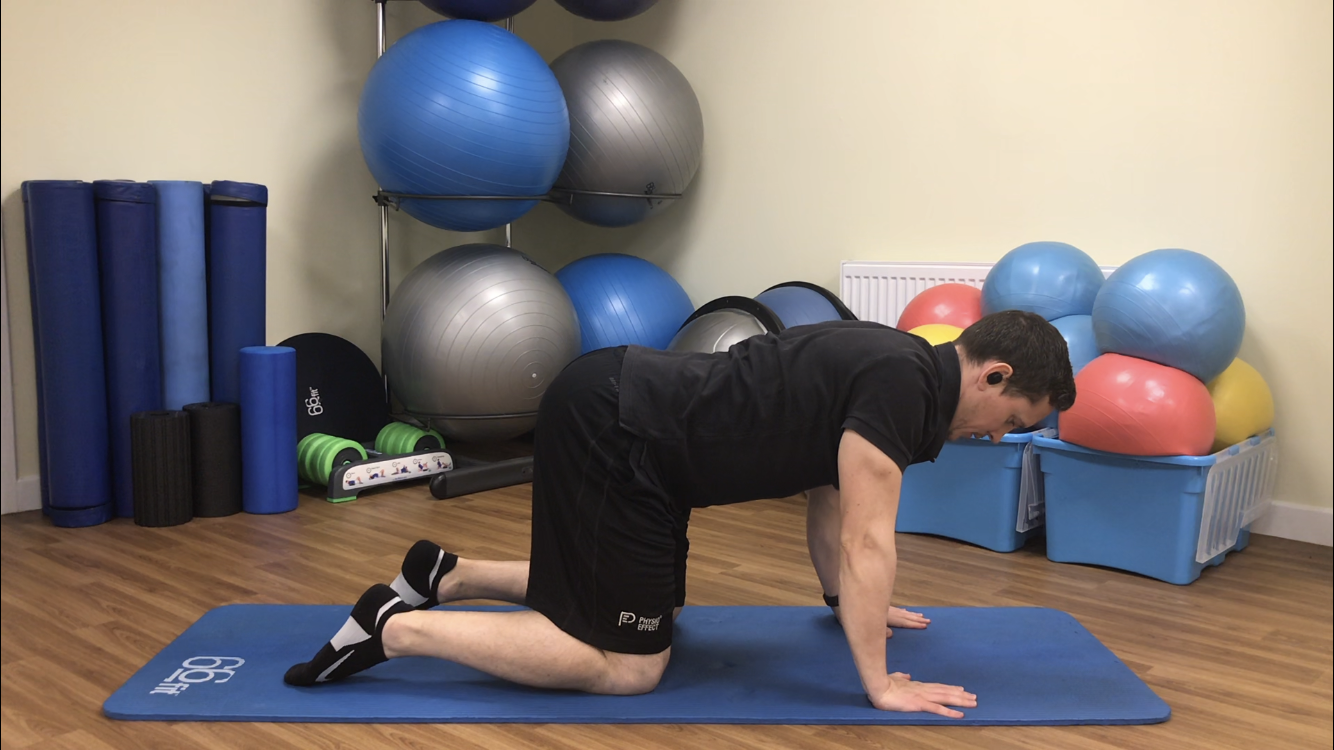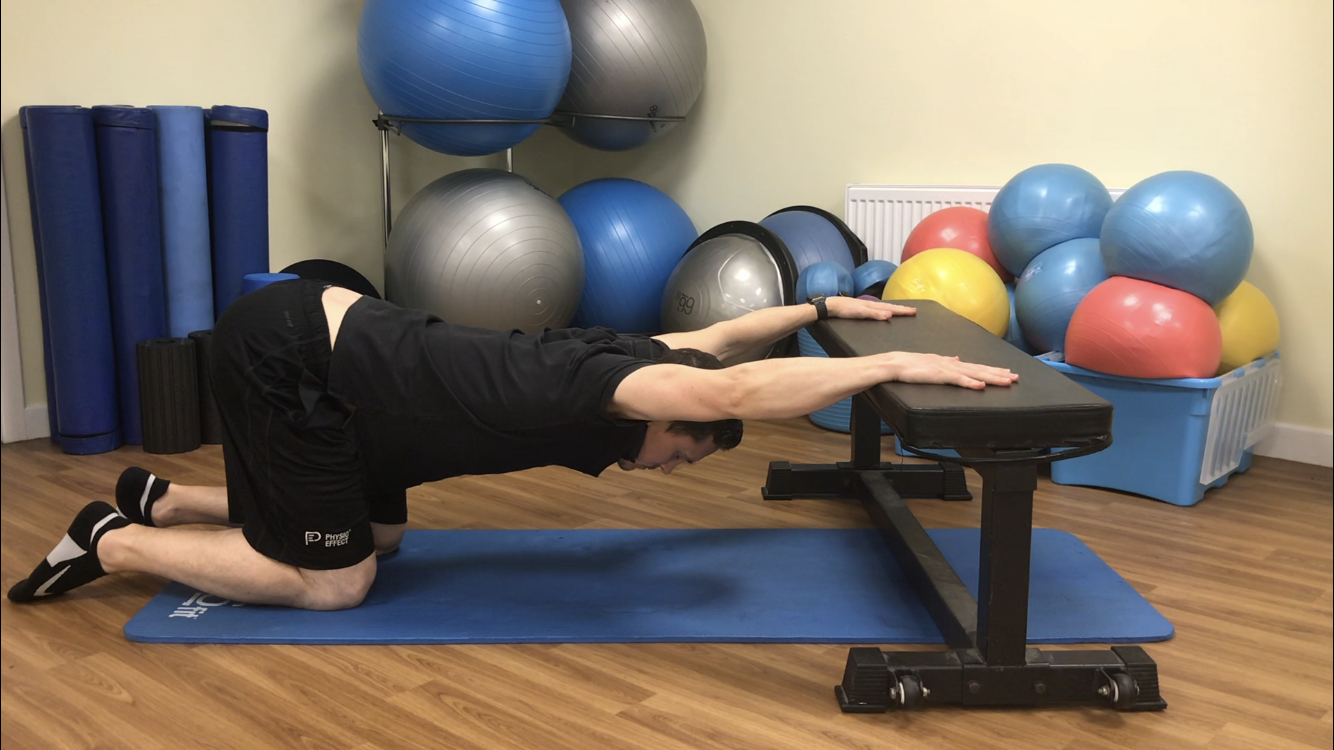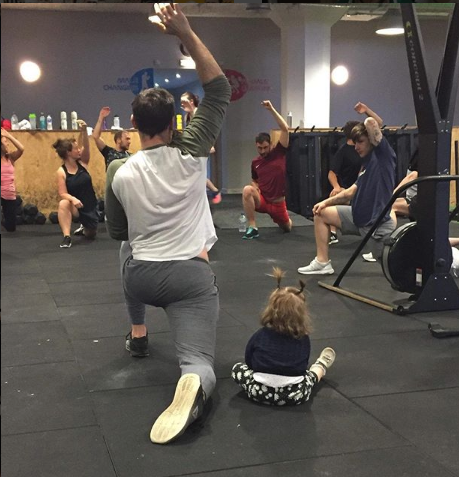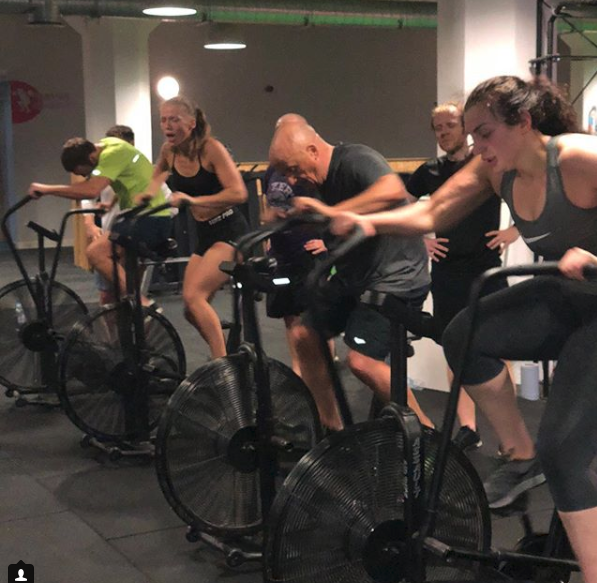Thoracic Mobility - The Key To A Pain Free Spine!
When your thoracic spine isn't moving as it should, it creates a domino effect throughout your body. This can contribute to neck, shoulder & lower back pain. Let’s drill down into how to take better care of your back and get that thoracic spine moving!
Unlock Your Movement Potential: Why Your Thoracic Spine is a Game-Changer! 😀
Written by Daniel Wray (Senior Physiotherapist & Mobility Coach)
Back pain is very common - Thoracic spine stiffness is often to blame
As someone who's spent over two decades in the clinic as a sports physiotherapist, I've seen first-hand how often seemingly unrelated aches and pains can be traced back to one crucial area: your thoracic spine. You know, that middle section of your back, between your neck and your lower back? It might not get as much attention as your neck or lower back, but trust me, it's a true unsung hero when it comes to keeping you moving freely and comfortably, no matter your age or activity level.
Think of your thoracic spine as the command centre for so much of your upper body movement. It's designed for rotation and extension, allowing you to twist, reach, and stand tall. But in our modern lives, spent often hunched over desks, phones, or even just relaxing on the couch, this vital area can become stiff and restricted. And when that happens, other parts of your body have to pick up the slack, often leading to problems!
The Ripple Effect: How a Stiff Thoracic Spine Causes Trouble
When your thoracic spine isn't moving as it should, it creates a domino effect throughout your body. Here's how it can contribute to those annoying aches and pains:
Familiar hunching over your desk increases thoracic spine rounding and stiffness
Neck Pain: If your mid-back is stiff, your neck has to work overtime to compensate for head rotation and movement. This extra strain can lead to tightness, headaches, and that familiar crick in your neck.
Shoulder Pain: Your shoulder blade sits right on top of your rib cage, which is connected to your thoracic spine. If your mid-back is locked up, your shoulder blade can't move properly, impacting your shoulder joint mechanics and potentially causing impingement or rotator cuff issues.
Lower Back Pain: When your thoracic spine lacks mobility, your lower back (lumbar spine) might try to compensate by over-rotating or extending, putting excessive stress on discs and joints, leading to that nagging lower back discomfort.
Move Freely, Live Fully: The Benefits of Thoracic Mobility
Thoracic Rotation Mobility can help improve back pain and stiffness
The good news is, improving your thoracic spine mobility can have a profound impact on your overall well-being. By restoring natural movement to this area, you can:
Reduce Pain: Alleviate strain on your neck, shoulders, and lower back.
Improve Posture: Stand taller and reduce that "hunched over" feeling.
Enhance Performance: Whether you're an athlete or just enjoy daily activities, better thoracic mobility can improve your ability to rotate, reach, and lift.
Breathe Easier: Your ribs attach to your thoracic spine, so improved mobility can even enhance your breathing mechanics!
Easy Moves for a More Mobile You!
Ready to get started? Here are some simple yet effective exercises you can incorporate into your daily routine to unlock your thoracic spine's potential. Remember to listen to your body and move gently. Consistent daily practice is your key to progress.
Foam Roller Thoracic Extension
Thoracic Extension Over a Foam Roller:
Lie on your back with a foam roller positioned horizontally across your mid-back.
Place your hands behind your head for support.
Gently extend your upper back over the roller, allowing your head to drop towards the floor.
Slowly roll up and down your mid-back, focusing on areas of stiffness.
Seated Thoracic Rotations
Seated Thoracic Rotations:
Sit comfortably in a chair with your feet flat on the floor.
Cross your arms over your chest or place your hands behind your head.
Gently rotate your upper body to one side, leading with your rib cage.
Hold briefly, then return to the center and rotate to the other side.
As you rotate try gently lifting your elbow to he ceiling adding side opening to rotation
Cat-Cow Stretch:
Start on your hands and knees, with your wrists under your shoulders and knees under your hips.
Cat: Exhale as you round your spine towards the ceiling, tucking your chin to your chest.
Cow: Inhale as you drop your belly towards the floor, lifting your head and tailbone.
Flow smoothly between these two positions 1-2 minutes
Cat - Rounded back
Cow -hollow back
Elevated Arms Thoracic Extension
Similar to cat-cow motion performed with your arms elevated & resting on a chair or bench.
Breathe in as you round up lifting your head and shoulders
Exhale as you sit down and back relaxing across your back and shoulder blades
Repeat slowly for 10-15 deep breath cycles
Breathe in as you round your upper back and shoulders
Exhale as you relax and sit back extending through your back and shoulders
Deep Squat Spine Rotations:
This is more advanced, please avoid if you are not comfortable or able to maintain a deep squat position
Get into a deep squat and hold, Block one knee on the inside with your elbow
With the opposite arm straight rotate and lengthen towards the ceiling
Follow the movement with your head and actively rotate your ribcage and sternum
Hold for a few seconds at the top position then return & repeat on the opposite side.
Work side to side for 30-60 seconds
Deep Squat - Spinal Rotations
Incorporating these exercises regularly can make a world of difference in how you feel and move. It's amazing what a little attention to your thoracic spine can do for your overall comfort and vitality!
Looking for something a little more challenging?
If you are physically able these videos below can help you progress your spinal mobility and can be done routinely to increase range of movement and reduce back ache and discomfort.
Like most things worth having mobility improvements are earnt by consistency of practice. Show up everyday and work on your areas of stiffness & weakness and you will reap the rewards of moving better & reducing pain!
Downward dog - Calves, hamstrings and Thoracic/Shoulder Stretch
3 Point Bridge- Full body mobility including hips, spine and shoulders
Thoracic Spine Windmills & rotations
thank you
Thanks for reading, please share with any friends, family or colleagues who could benefit.
We are always here to listen & help. Our specialist team can help you navigate and manage any ache, pain or injury.
5 Signs You Are Overtraining 😫
Getting fit is great but more isn’t always better. Learn to recognise the signs and indicators that you are overtraining
You are Probably Overtraining 😲 Follow this advice to train smarter, reduce injuries & Feel better 😀
Written by Daniel Wray (Senior Physiotherapist)
One of the most common causes of injury is poorly structured and executed training plans. We see a lot of injuries caused by excessive stress on the body due to no real planning around exercise type, intensity & volume. While it is admirable to get out there and get fit the tendency for most is to overreach and often exercise is too sporadic, random & intense. We have previously looked at common signs of overtraining so here we give practical and simple strategies you can implement to reduce this risk, take control & start implementing goal orientated, structured training.
Confusion around training & exercise is common
With increasing frequency we are seeing people in clinic who are getting injured from overtraining. The boom in hybrid style fitness like CrossFit & Hyrox means the demands people are putting on their bodies are constantly increasing. It’s natural to want it all but trying to serve 2 masters simultaneously, with strength training one side and cardio on the other, often results in injury & failure to really progress on either front.
5 Tips to Prevent Overtraining
Listen to Your Body
Pay attention to physical and mental signals. Fatigue, decreased performance, and persistent soreness may indicate that you need to rest.Incorporate Rest Days
Schedule regular rest days into your training regimen. Adequate recovery allows your muscles to repair and helps to avoid burnout.Vary Your Workouts
Include a mix of training modalities to prevent overuse injuries and mental fatigue. Cross-training can help maintain fitness while reducing strain on specific muscle groups.Monitor Training Volume
Keep track of the intensity, duration, and frequency of your workouts. Gradually increase these parameters and avoid sudden spikes in training load.Ensure Proper Nutrition and Hydration
Fuel your body with a balanced diet and stay hydrated. Proper nutrition supports recovery and overall performance, minimising the risk of overtraining.
5 Signs of Overtraining
Persistent Fatigue 🥱🥱
Experiencing constant fatigue, despite getting adequate rest, can be a sign of overtraining. If workouts begin to feel unusually exhausting and recovery seems difficult, it may indicate your body is not coping with the stress.Decreased Performance ⬇⬇⬇
A noticeable drop in performance levels, such as reduced strength, endurance, or speed, can signal that your body is struggling to recover. If previously manageable training sessions start to feel increasingly challenging, consider reassessing your training load.Increased Injuries ⬆⬆⬆
Frequent injuries or recurring muscle strains are common indicators of overtraining. Overworking your body can lead to a higher risk of injuries, affecting your ability to train effectively.Mood Changes 😰😰
Emotional fluctuations, such as increased irritability, anxiety, or depression, may occur with overtraining. These mood disturbances often stem from the physical stress your body is undergoing and can impact overall well-being.Sleep Disturbances 😪😪
Problems with sleep, such as insomnia or disrupted sleep patterns, can also indicate overtraining. A body under stress may struggle to relax, affecting both sleep quality and quantity, which are crucial for recovery.
Feeling Constantly Tired Can be A Sign of Overtraining
TIME TO TAKE STOCK
If any or all of the above points resonate with you then you are probably overtraining and risking injury and reduced performance. It’s good to remember that quality and structure are more important than quantity when it comes to training, fitness & progression. You probably aren’t an elite level athlete with the opportunity to train (& recover) full time so don’t try and train like you are. Exercise shouldn’t be punishment & a mindset like this will lead you to injury.
If you need help with injury or understanding training for your own unique needs then speak to a qualified trainer. Our team at Physio Effect can help you recover from injury and set realistic training goals helping you progress consistently and avoid the boom to bust crashes we see so often with no structure.
thank you
Thanks for reading, please share with any friends, family or colleagues who could benefit.
We are always here to listen & help. Our specialist team can help you navigate and manage any ache, pain or injury.
Are you taking a HIIT in Training?
In the last number of years we’ve seen a huge shift in the exercise industry towards high intensity interval training (HIIT) as a means of providing time efficient and intense workouts.
In the last number of years we’ve seen a huge shift in the exercise industry towards high intensity interval training (HIIT) as a means of providing time efficient and intense workouts.
There is no doubt that HIIT training can rapidly increase fitness and provide the numerous health benefits associated with exercise but there are also a number of pitfalls to training exclusively like this that should be considered in order to ensure this works for you.
As Sports Physiotherapists we have seen numerous patients fall into repetitive cycles of injury while training in the gym. It becomes all too easy to just suggest this is because that person does Crossfit or trains at a boot camp and attribute the blame to this.
We work closely with a number of Crossfit and Functional Fitness style gyms and, in our experience, they are providing great instruction of movement form/techniques and offer a good variety of training ranging from strength and gymnastic to HIIT training.
We feel that the problem with injury usually arises because of the individual participating in this training not fully appreciating what is involved in it and where they fit into it at any point in time. Often, intense, sweaty workouts are favoured over the more strength or technique based sessions as there is a greater association with feeling fit or losing weight.
The problem with this is that in these HIIT type session exercises are being performed quickly in order to set a time or score. This requires pushing into fatigue using weights or load that can often be disproportionately high for your current strength levels and abilities. This can cause soft tissues and joints to become overloaded and injured. To train like this at a maximal or “competition” intensity 5-6 days per week is unsustainable and unproductive on so many levels and will nearly always lead to burn-out, disappointing performances and injury.
No professional athletes would ever train at full intensity on every session; instead they will do this in limited amounts and work on the various components of their sport in order to peak for short periods only a few times per year. This ensures continual improvement and decreases their likelihood of injury.
We appreciate most people have no aspirations with their exercise to compete in anything, however in order to train consistently, safely and effectively over a number of years, the principles need to be much the same whether recreational or competitive. Class-based exercise instructors will teach technique and oversee safe performance to the best of their abilities in a large group but they cannot be expected to know each individual or monitor everyone to the same degree as a personal trainer or coach. This is why it is essential to take more of an individualised approach and responsibility within these environments in order to lessen injuries, frustration and lack of improvement.
Things to consider with your HIIT sessions:
Have you been training regularly to have built up a sufficient base of fitness and strength to attack a workout at maximum intensity?
If not, you can always modify the workout slightly by going lighter, slower or changing the exercises to something that is more appropriate for you. There’s no shame in it, the shame would be to continually miss sessions due to injury
Do you warm up appropriately for intense exercise sessions?
Most people will exercise early in the morning or after work and at both these times the body is stiff from being sedentary for long periods. It’s unrealistic to expect to move well or safely during intense bouts of exercise without preparing the joints and muscles for this.
The Coach (and mini-coach!) at our Partner Gym EveryDay Athlete leads a structured warm up appropriate to the programmed HIIT workout
What are your individual needs when warming up? Eg. do you require extra stretching for your shoulders because that day you’ve been hunched over a desk all day?
This may not be covered in a class-based environment and you should make sure to cover this yourself before the class starts.
What are your expectations?
If you plan on moving quickly and repetitively with a weight or movement, do you have the strength and skill to perform this same movement in a much more controlled manner?
If you want to get a sweat on in every session that’s okay too but this can also be achieved by training at 80% instead of 100% on some sessions.
Long Term Goals
Year in and year out exercise and training requires consistency and dedication. Similar to more extreme diets, we shouldn’t be looking for a quick fix as it is often unsustainable and doesn’t provide long term results, as this approach can be tortuously difficult and we will lose motivation quickly or get injured.
Have you discussed with your coach, instructor or physio what your individual needs and expectations are with training?
This will reduce that feeling that you’re expected to perform at full intensity on every session. They can help identify things that you may do in your own time or out with class times in the gym that should help you progress to where you want to.
Image from one of the HIIT Classes at one of our partner gyms EveryDay Athlete at our Northside Clinic and Studio in Port Dundas





